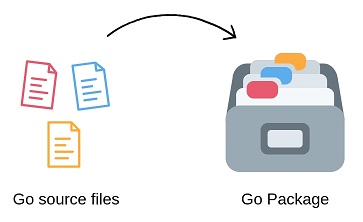Go教程:19-文件路径filepath

path/filepath 包涉及到路径操作时,路径分隔符使用 os.PathSeparator. Go是一个跨平台的语言,不同系统,路径表示方式有所不同,比如 Unix 和 Windows 差别很大.本包能够处理所有的文件路径,不管是什么系统.
Go标准库中还有path, path 和 path/filepath 函数有点重复,大部分情况下建议使用 path/filepath.
1.示例代码:package path
package main;
import (
"fmt"
"path"
)
//go语言path包的学习
func main() {
//返回路径的最后一个元素
fmt.Println(path.Base("./github.com/mojocn/c"));
//如果路径为空字符串,返回.
fmt.Println(path.Base(""));
//如果路径只有斜线,返回/
fmt.Println(path.Base("///"));
//返回等价的最短路径
//1.用一个斜线替换多个斜线
//2.清除当前路径.
//3.清除内部的..和他前面的元素
//4.以/..开头的,变成/
fmt.Println(path.Clean("./github.com/mojocn/../"));
//返回路径最后一个元素的目录
//路径为空则返回.
fmt.Println(path.Dir("./github.com/mojocn/c"));
//返回路径中的扩展名
//如果没有点,返回空
fmt.Println(path.Ext("./github.com/mojocn/c/d.jpg"));
//判断路径是不是绝对路径
fmt.Println(path.IsAbs("./github.com/mojocn/c"));
fmt.Println(path.IsAbs("/github.com/mojocn/c"));
//连接路径,返回已经clean过的路径
fmt.Println(path.Join("./a", "b/c", "../d/"));
//匹配文件名,完全匹配则返回true
fmt.Println(path.Match("*", "a"));
fmt.Println(path.Match("*", "a/b/c"));
fmt.Println(path.Match("\\b", "b"));
//分割路径中的目录与文件
fmt.Println(path.Split("./github.com/mojocn/c/d.jpg"));
}
2.示例代码:package path/filepath
filepath.Join("C:/a", "/b", "/c") 拼接目录
package main;
import (
"path/filepath"
"fmt"
"os"
)
//学习filepath包,兼容各操作系统的文件路径
func main() {
//返回所给路径的绝对路径
path, _ := filepath.Abs("./1.txt");
fmt.Println(path);
//返回路径最后一个元素
fmt.Println(filepath.Base("./1.txt"));
//如果路径为空字符串,返回.
fmt.Println(filepath.Base(""));
//如果路径只有斜线,返回/
fmt.Println(filepath.Base("///"));
//返回等价的最短路径
//1.用一个斜线替换多个斜线
//2.清除当前路径.
//3.清除内部的..和他前面的元素
//4.以/..开头的,变成/
fmt.Println(filepath.Clean("C:/github.com/mojocn/../c"));
fmt.Println(filepath.Clean("./1.txt"));
//返回路径最后一个元素的目录
//路径为空则返回.
fmt.Println(filepath.Dir("./github.com/mojocn/c"));
fmt.Println(filepath.Dir("C:/github.com/mojocn/c"));
//返回链接文件的实际路径
path2, _ := filepath.EvalSymlinks("1.lnk");
fmt.Println(path2);
//返回路径中的扩展名
//如果没有点,返回空
fmt.Println(filepath.Ext("./github.com/mojocn/c/d.jpg"));
//将路径中的/替换为路径分隔符
fmt.Println(filepath.FromSlash("./github.com/mojocn/c"));
//返回所有匹配的文件
match, _ := filepath.Glob("./*.go");
fmt.Println(match);
//判断路径是不是绝对路径
fmt.Println(filepath.IsAbs("./github.com/mojocn/c"));
fmt.Println(filepath.IsAbs("C:/github.com/mojocn/c"));
//连接路径,返回已经clean过的路径
fmt.Println(filepath.Join("C:/a", "/b", "/c"));
//匹配文件名,完全匹配则返回true
fmt.Println(filepath.Match("*", "a"));
fmt.Println(filepath.Match("*", "C:/github.com/mojocn/c"));
fmt.Println(filepath.Match("\\b", "b"));
//返回以basepath为基准的相对路径
path3, _ := filepath.Rel("C:/github.com/mojocn", "C:/github.com/mojocn/c/d/../e");
fmt.Println(path3);
//将路径使用路径列表分隔符分开,见os.PathListSeparator
//linux下默认为:,windows下为;
fmt.Println(filepath.SplitList("C:/windows;C:/windows/system"));
//分割路径中的目录与文件
dir, file := filepath.Split("C:/github.com/mojocn/c/d.jpg");
fmt.Println(dir, file);
//将路径分隔符使用/替换
fmt.Println(filepath.ToSlash("C:/github.com/mojocn"));
//返回分区名
fmt.Println(filepath.VolumeName("C:/github.com/mojocn/c"));
//遍历指定目录下所有文件
filepath.Walk("./", func(path string, info os.FileInfo, err error) error {
fmt.Println(path)
return nil
})
}
3. 文件夹遍历
Go 语言中进行目录遍历的原生方法主要是以下3种:
filepath.Walk()ioutil.ReadDir()os.File.Readdir()
性能是越底层越高(上层其实是对底层API的封装).
3.1 filepath.Walk()
遍历根目录(root)下的文件树,为树中的每个文件或目录(包括根目录)调用walkFn.所有在访问文件和目录时出现的错误都由walkFn过滤. 遍历按词法顺序进行,这使得输出是确定的,但对于非常大的目录来说,遍历可能是低效的. filepath.Walk()不会跟进符号链接.
package main
import (
"flag"
"fmt"
"os"
"path/filepath"
)
const (
layout = "2006-01-02 15:04:05"
)
func VisitFile(fp string, fi os.FileInfo, err error) error {
if err != nil {
fmt.Println(err) // can't walk here,
return nil // but continue walking elsewhere
}
if fi.IsDir() {
return nil // not a file. ignore.
}
// 过滤输出内容
matched, err := filepath.Match("*.txt", fi.Name())
if err != nil {
fmt.Println(err) // malformed pattern
return err // this is fatal.
}
if matched {
// fmt.Println(fp)
fmt.Printf("Name: %s, ModifyTime: %s, Size: %v\n", fp, fi.ModTime().Format(layout), fi.Size())
}
return nil
}
func main() {
var path = flag.String("path", ".", "The path to traverse.")
flag.Parse()
filepath.Walk(*path, VisitFile)
}
3.2 ioutil.ReadDir
filepath.Walk()会自动遍历子目录,但有些时候我们不希望这样,如果只想看当前目录, 或手动指定某几级目录中的文件,这个时候,可以使用 ioutil.ReadDir 进行替代.
package main
import (
"flag"
"fmt"
"io/ioutil"
"log"
)
func main() {
var path = flag.String("path", ".", "The path to traverse.")
flag.Parse()
files, err := ioutil.ReadDir(*path)
if err != nil {
log.Fatal(err)
}
for _, file := range files {
fmt.Println(file.Name())
}
}
3.3 os.File.os.File.Readdir
package main
import (
"fmt"
"io/ioutil"
"os"
"path/filepath"
)
// https://stackoverflow.com/questions/14668850/list-directory-in-go/49196644#49196644
func main() {
var (
root string
err error
)
// root = "/home/manigandan/Desktop/Manigandan/sample"
root = "."
f, err := os.Open(root)
if err != nil {
return files, err
}
fileInfo, err := f.Readdir(-1)
f.Close()
if err != nil {
return files, err
}
for _, file := range fileInfo {
fmt.Println(file.Name())
}
}
3.4 方法封装的一个演示和对比
package main
import (
"fmt"
"io/ioutil"
"os"
"path/filepath"
)
// https://stackoverflow.com/questions/14668850/list-directory-in-go/49196644#49196644
func main() {
var (
root string
files []string
err error
)
// root = "/home/manigandan/Desktop/Manigandan/sample"
root = "."
// filepath.Walk
files, err = FilePathWalkDir(root)
if err != nil {
panic(err)
}
// ioutil.ReadDir
files, err = IOReadDir(root)
if err != nil {
panic(err)
}
//os.File.Readdir
files, err = OSReadDir(root)
if err != nil {
panic(err)
}
for _, file := range files {
fmt.Println(file)
}
}
func FilePathWalkDir(root string) ([]string, error) {
var files []string
err := filepath.Walk(root, func(path string, info os.FileInfo, err error) error {
if !info.IsDir() {
files = append(files, path)
}
return nil
})
return files, err
}
func IOReadDir(root string) ([]string, error) {
var files []string
fileInfo, err := ioutil.ReadDir(root)
if err != nil {
return files, err
}
for _, file := range fileInfo {
files = append(files, file.Name())
}
return files, nil
}
func OSReadDir(root string) ([]string, error) {
var files []string
f, err := os.Open(root)
if err != nil {
return files, err
}
fileInfo, err := f.Readdir(-1)
f.Close()
if err != nil {
return files, err
}
for _, file := range fileInfo {
files = append(files, file.Name())
}
return files, nil
}